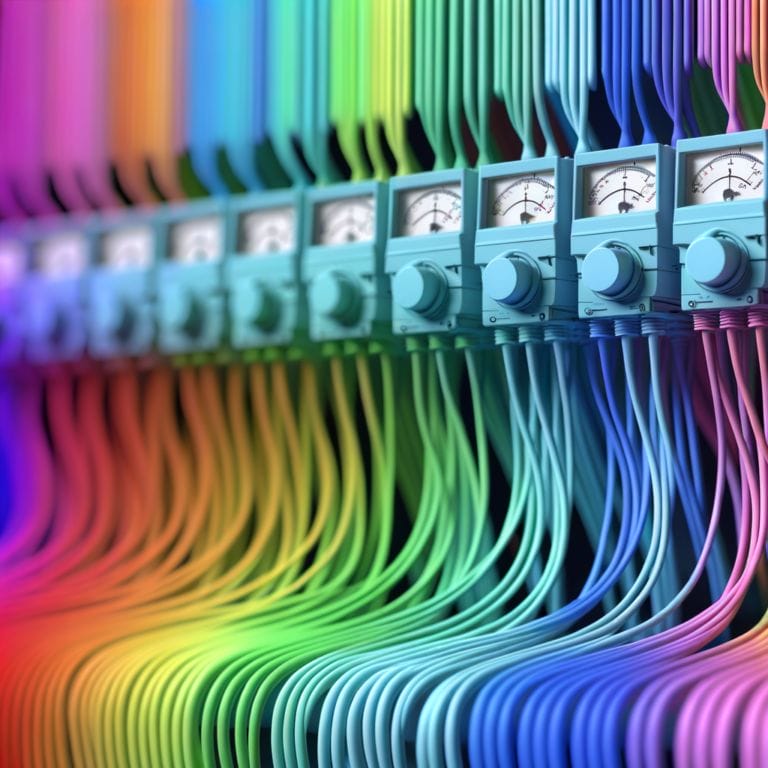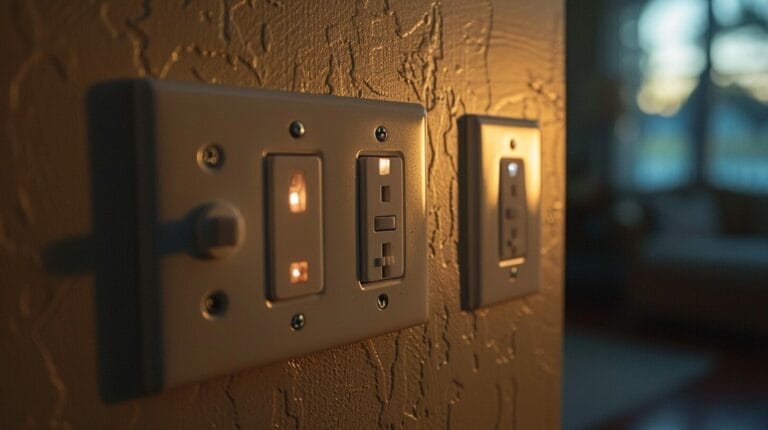Do LED Lights Have UV Rays? The Truth About UV Radiation
Navigating the complex subject of LED lights, including blue and white light LEDs, and UV radiation, we encounter a sea of misconceptions and truths. It’s widely accepted that sunlight is a significant UV radiation source, but the question of whether the LED lights used daily emit UV rays is less clear.
So, do LED lights have UV rays? This article aims to shed light on the different types of LED lights, including blue LEDs, and their potentials, more specifically LED strips and LED bulbs to emit harmful UV rays, exploring both the risks and innovations in LED technology.
Key Takeaways
- LED lights emit minimal UV radiation, making them a safer lighting option.
- Some LED lights, including brilliant blue LEDs, are specifically designed to emit UV light for controlled applications.
- Prolonged exposure to optical radiation from LEDs can potentially cause health risks.
- Innovations in LED technology are working to minimize UV emissions for improved safety, considering that many are sensitive to UV.
Understanding the Basics: Do LED Lights Emit UV Rays?

To understand whether LED grow lights emit UV rays, it’s essential to delve into the science behind UV radiation and how LEDs function. Ultraviolet (UV) radiation refers to a type of energy emitted by the sun, invisible to the human eye, and divided into three types: UV-A, UV-B, and UV-C rays, each with different wavelengths and effects.
LEDs, or Light Emitting Diodes, known for their efficiency and longevity, have revolutionized the way we light up our world. These innovative lights emit a negligible amount of UV radiation, significantly less than what traditional lighting sources like fluorescent or incandescent bulbs produce.
Some LED lights, however, are designed to emit a small amount of UV light, subsequently converted into visible light by a phosphor coating inside the bulb. This process minimizes potential UV exposure further, resulting in less UV radiation.
A Closer Look: Types of LED Lights and Their UV Emissions

Delving deeper, we explore the varying UV emissions across different types of LED lights, including bulbs, strip lights, and lighting systems.
LED bulbs, known for safety and energy efficiency, emit a negligible amount of UV rays. LED strip lights, a popular type of artificial light source known for their versatility and safety, emit an incredibly low amount of UV radiation, proving again that LED lights are safe.
Likewise, LED lighting system solutions emit a minimal amount of UV rays, providing safe and efficient illumination for homes, workplaces, and public spaces, reaffirming the reasons LED lighting is preferred.
Potential Risks: Can LED Lights Emit Harmful UV Rays?

While LED lights are generally considered safe, it’s important to examine whether they can emit harmful UV rays. The truth is, while most LED lights emit a small amount of UV light, the levels of UV radiation are typically much lower than those emitted by traditional UV lamps.
However, even minimal exposure to UV rays, like the lot of UV a fluorescent light, or different types of lights can emit, can impact our well-being. Prolonged exposure to UV radiation from LEDs is usually harmful. Even at low levels, it can cause skin damage, raising concerns about the cumulative effect of daily exposure to LED lights. Other health risks associated with the type of UV radiation, such as eye damage and potential links to skin cancer and certain UVB rays related skin conditions, are also important considerations.
Manufacturers are taking innovative measures to minimize the amount of UV produced from LED lights, optimizing their lighting solutions to significantly reduce the risk associated with UV radiation.
Safety Measures: Protecting Yourself from UV Emissions of LED Lights

By adopting specific safety measures, we can minimize potentially harmful ultraviolet rays exposure from different types of LED lights, which include LED bulbs and LED strips. Such proactive measures include:
- Selecting the Right Type of Light Bulb: Opt for LED bulbs specifically designed with phosphor to produce white light and emit minimal UV radiation.
- Practicing Safe Usage: Incorporate habits such as limiting direct exposure to LED lights and using them in well-ventilated areas when the bulbs emit UV radiation.
- Employing UV Protective Materials: When prolonged exposure is inevitable, consider using materials that can block or reduce UV penetration significantly.
Innovations in LED Technology: LED UV Lights and Their Applications

LED UV lights, a groundbreaking innovation in lighting technology, have revolutionized various industries with their unique applications and benefits, compared to traditional lighting. Unlike regular LED lights, LED UV lights are designed to produce ultraviolet radiation, opening up new possibilities from medical treatments to sterilization processes.
However, it’s crucial to handle LED UV lights with care to avoid exposure to harmful UV rays, especially as bulbs emit UV radiation. Precautions, such as using protective gear and limiting exposure to much UV from these brilliant blue LEDs and other light types, are essential to prevent skin damage and ensure safe usage.
Conclusion
In conclusion, we’ve learned that while LED lights can emit UV rays, the levels vary across different types, and even standard LEDs emit the necessary amount. It’s crucial to be aware of the potential risks associated with the significant amount of UV emitted, especially from specific LEDs. Thankfully, by adopting safety measures we can effectively protect ourselves from the significant amount of UV that can be potentially emitted.
Moreover, the advancements in LED technology, particularly in LED UV lights, open up exciting applications while managing safety concerns, especially when these bulbs emit UV. Hence, we are transitioning to safer, more versatile lighting solutions such as LED lighting due to UV emissions or more specifically the reduced amount UV produced by such lights.
Frequently Asked Questions
Can LED lights produce UV radiation?
Yes, fluorescent lights and LED lights can emit UV radiation, but the amount is usually minimal compared to other light sources.
Are all types of LED lights and UV radiation related?
Yes, all types of LED lights, including brilliant blue LEDs, can emit some level of UV radiation, but the amount varies depending on the specific type of LED.
Do LED lights emit UVB or UVA rays?
LED lights, particularly the white LED, typically emit types of UV rays – UVA, while the amount of UVB radiation produced is usually minimal.
Are LED lights and UV radiation linked to skin damage?
LED lights, including light LEDs, emit UV radiation which can contribute to skin damage and potentially skin cancer if the exposure is prolonged, especially compared to traditional indoor lighting. Yet, modern LED lights, especially LED grow lights, are intended to emit a minimal quantity of UV radiation to mitigate this threat.
Are LED tanning lights safe for use considering UV radiation?
LED tanning lights can emit a necessary amount of UV radiation for tanning purposes, but it is essential to use them according to the manufacturer’s instructions to minimize any potential risk to the skin.







